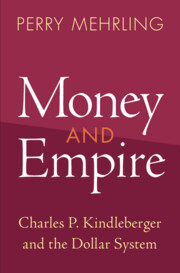Refine search
Actions for selected content:
26945 results in Economic history
Index
-
- Book:
- Debt, Trust, and Reputation
- Published online:
- 30 November 2021
- Print publication:
- 16 June 2022, pp 366-372
-
- Chapter
- Export citation
6 - Obligation
-
- Book:
- Debt, Trust, and Reputation
- Published online:
- 30 November 2021
- Print publication:
- 16 June 2022, pp 201-227
-
- Chapter
- Export citation
7 - Disappearance
-
- Book:
- Debt, Trust, and Reputation
- Published online:
- 30 November 2021
- Print publication:
- 16 June 2022, pp 228-271
-
- Chapter
- Export citation
5 - Trust
-
- Book:
- Debt, Trust, and Reputation
- Published online:
- 30 November 2021
- Print publication:
- 16 June 2022, pp 157-200
-
- Chapter
- Export citation
9 - Conclusion
-
- Book:
- Debt, Trust, and Reputation
- Published online:
- 30 November 2021
- Print publication:
- 16 June 2022, pp 341-345
-
- Chapter
- Export citation
8 - Reputation
-
- Book:
- Debt, Trust, and Reputation
- Published online:
- 30 November 2021
- Print publication:
- 16 June 2022, pp 272-340
-
- Chapter
- Export citation
Frontmatter
-
- Book:
- Debt, Trust, and Reputation
- Published online:
- 30 November 2021
- Print publication:
- 16 June 2022, pp i-iv
-
- Chapter
- Export citation
Dedication
-
- Book:
- Debt, Trust, and Reputation
- Published online:
- 30 November 2021
- Print publication:
- 16 June 2022, pp v-vi
-
- Chapter
- Export citation
Glossary
-
- Book:
- Debt, Trust, and Reputation
- Published online:
- 30 November 2021
- Print publication:
- 16 June 2022, pp 346-349
-
- Chapter
- Export citation
Part II - Debt in Banaras
-
- Book:
- Debt, Trust, and Reputation
- Published online:
- 30 November 2021
- Print publication:
- 16 June 2022, pp 155-156
-
- Chapter
- Export citation
Acknowledgements
-
- Book:
- Debt, Trust, and Reputation
- Published online:
- 30 November 2021
- Print publication:
- 16 June 2022, pp xi-xii
-
- Chapter
- Export citation
3 - Discretion
-
- Book:
- Debt, Trust, and Reputation
- Published online:
- 30 November 2021
- Print publication:
- 16 June 2022, pp 66-101
-
- Chapter
- Export citation
List of Tables and Figures
-
- Book:
- Debt, Trust, and Reputation
- Published online:
- 30 November 2021
- Print publication:
- 16 June 2022, pp ix-x
-
- Chapter
- Export citation
1 - Introduction
-
- Book:
- Debt, Trust, and Reputation
- Published online:
- 30 November 2021
- Print publication:
- 16 June 2022, pp 3-11
-
- Chapter
- Export citation
List of Abbreviations
-
- Book:
- Debt, Trust, and Reputation
- Published online:
- 30 November 2021
- Print publication:
- 16 June 2022, pp xiii-xiv
-
- Chapter
- Export citation
Part I - A Tangled Jungle of Disorderly Transactions
-
- Book:
- Debt, Trust, and Reputation
- Published online:
- 30 November 2021
- Print publication:
- 16 June 2022, pp 1-2
-
- Chapter
- Export citation
Contents
-
- Book:
- Debt, Trust, and Reputation
- Published online:
- 30 November 2021
- Print publication:
- 16 June 2022, pp vii-viii
-
- Chapter
- Export citation
4 - Containment
-
- Book:
- Debt, Trust, and Reputation
- Published online:
- 30 November 2021
- Print publication:
- 16 June 2022, pp 102-154
-
- Chapter
- Export citation

Money and Empire
- Charles P. Kindleberger and the Dollar System
-
- Published online:
- 11 June 2022
- Print publication:
- 04 August 2022
From Defensive to Transformative Business Diplomacy: The British South Africa Company and the End of Chartered Company Rule in Rhodesia, 1910–1925
-
- Journal:
- Business History Review / Volume 96 / Issue 4 / Winter 2022
- Published online by Cambridge University Press:
- 09 June 2022, pp. 777-803
- Print publication:
- Winter 2022
-
- Article
-
- You have access
- Open access
- HTML
- Export citation
